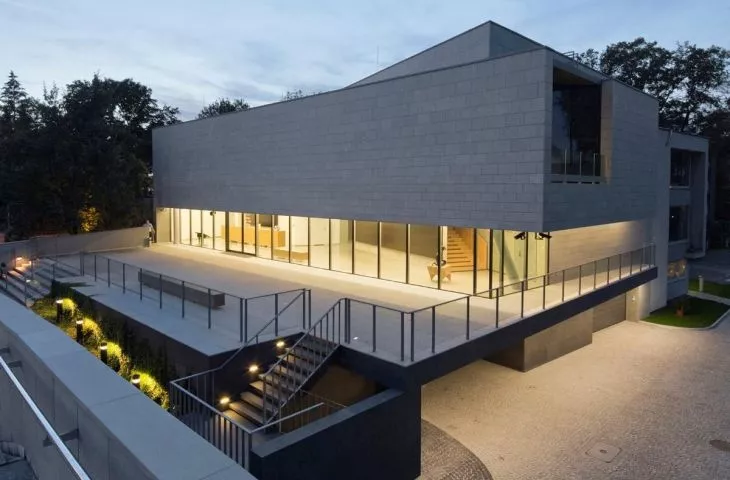Galeria Europa - Far East Gallery in Krakow was awarded first place in 2016 in the public architecture category in the 8th edition of the competition for the Stanislaw Witkiewicz Małopolski Voivodeship Award. Below we recall the winning project by Ingarden & Ewý Architects.
The Europe - Far East Gallery opened in 2015 and is an exhibition annex of the Manggha Museum of Japanese Art and Technology. The building is an exhibition space for the presentation of European art and Southeast Asian cultures.
The building was erected using light-colored sandstone, complemented by glass
© Ingarden & Ewý Architects
As Krzysztof Ingarden says about the project:
The idea for this building was born in 2004, when the Manggha Museum acquired a small plot of land adjacent to its site on the side of Konopnicka Street. For the Manggha Museum, the main goal was to expand the possibilities for artistic and exhibition activities from Polish-Japanese to European-Dalekernization, which coincided with Poland's accession to the European Union.
classic gallery spaces
The gallery has two exhibition rooms located on two floors. Both halls have the character of classic white gallery spaces (the so-called "white cube"), as neutral in expression as possible, allowing the exhibition of various forms of art, mainly modern. This type of exhibition halls was lacking in the main Manggha building, which is mainly adapted to the exhibition requirements of historical art. The new building significantly expands this scope, giving curators great freedom in the way they use the space and carry out exhibition projects. The gallery is equipped with the necessary exhibition preparation facilities, warehouses, office space for curators and parking spaces.
The building is a neutral architectural backdrop for Manggha
© Ingarden & Ewý Architects
background for the Manggha
The main building of the Manggha Museum is a compositionally finished object, with a sophisticated and unique roof form. Any action that complements or continues this composition would carry the danger of disturbing this undeniable harmony. The goal of the new Gallery building was to respect this uniqueness and create a neutral architectural background to order the surroundings from Konopnicka Street. Thus, the Manggha Museum building remained the formal and functional dominant and the scale and composition of the new building is subordinated to it. Its minimalist mass was therefore located in such a way that it did not obscure the existing mass on the side of Konopnicka Street. The height was adjusted to the scale of the wavy roof of the main building," adds Krzysztof Ingarden.
A large terrace provides space for outdoor events
© Ingarden & Ewý Architects
The Europa - Far East Gallery has been moved closer to Konopnicka Street, creating a new frontage; on the side of the Manggha Museum, a foreground has been created with stairs, platforms and a terrace, perfectly suitable for outdoor exhibitions or meetings and events. The new building was erected using light sandstone, complemented by glass, which emphasized the calm, subtle expression of the new gallery's headquarters.
compiled by Dobrawa Bies
illustrations courtesy of Ingarden & Ewý Architects
















































